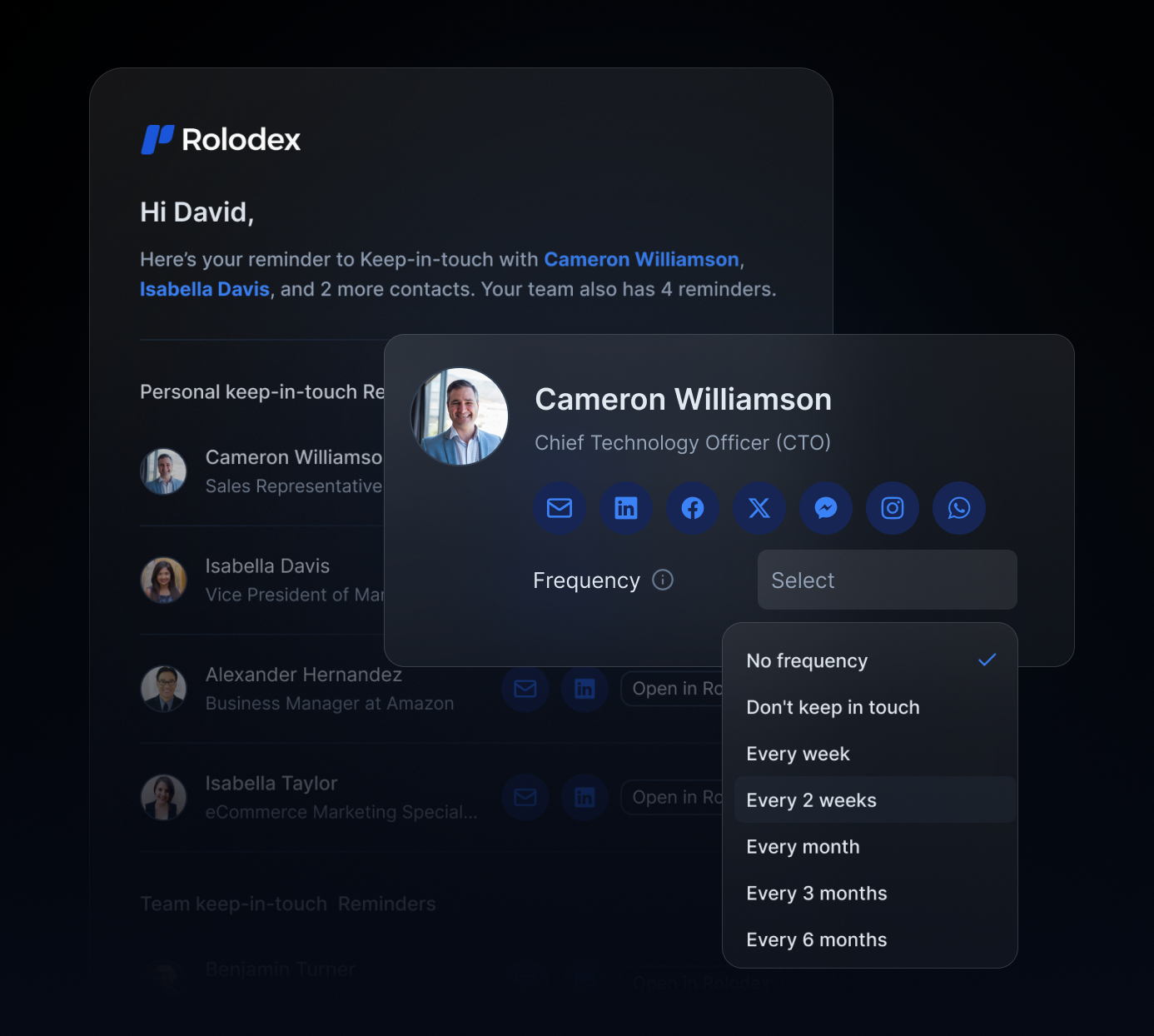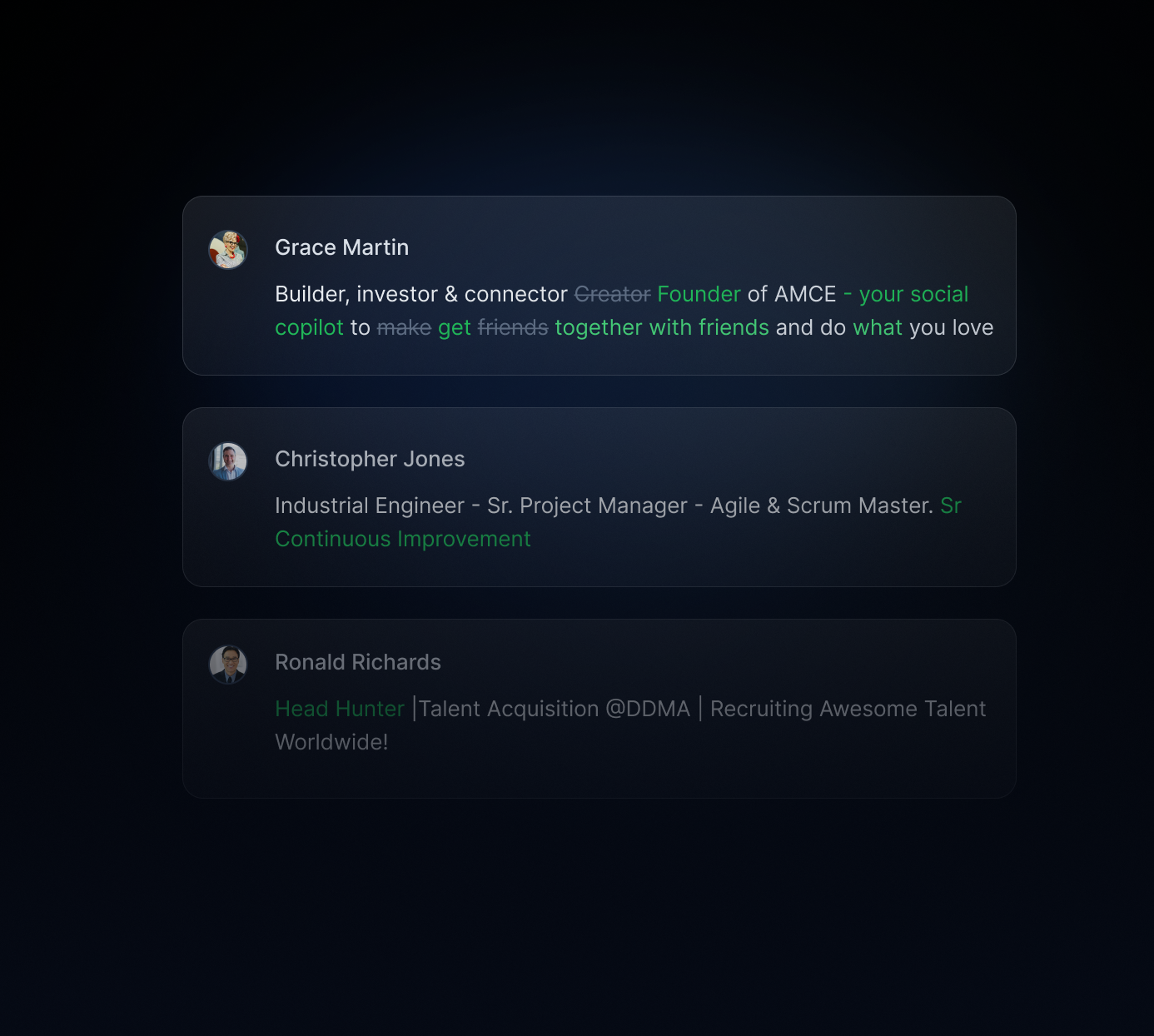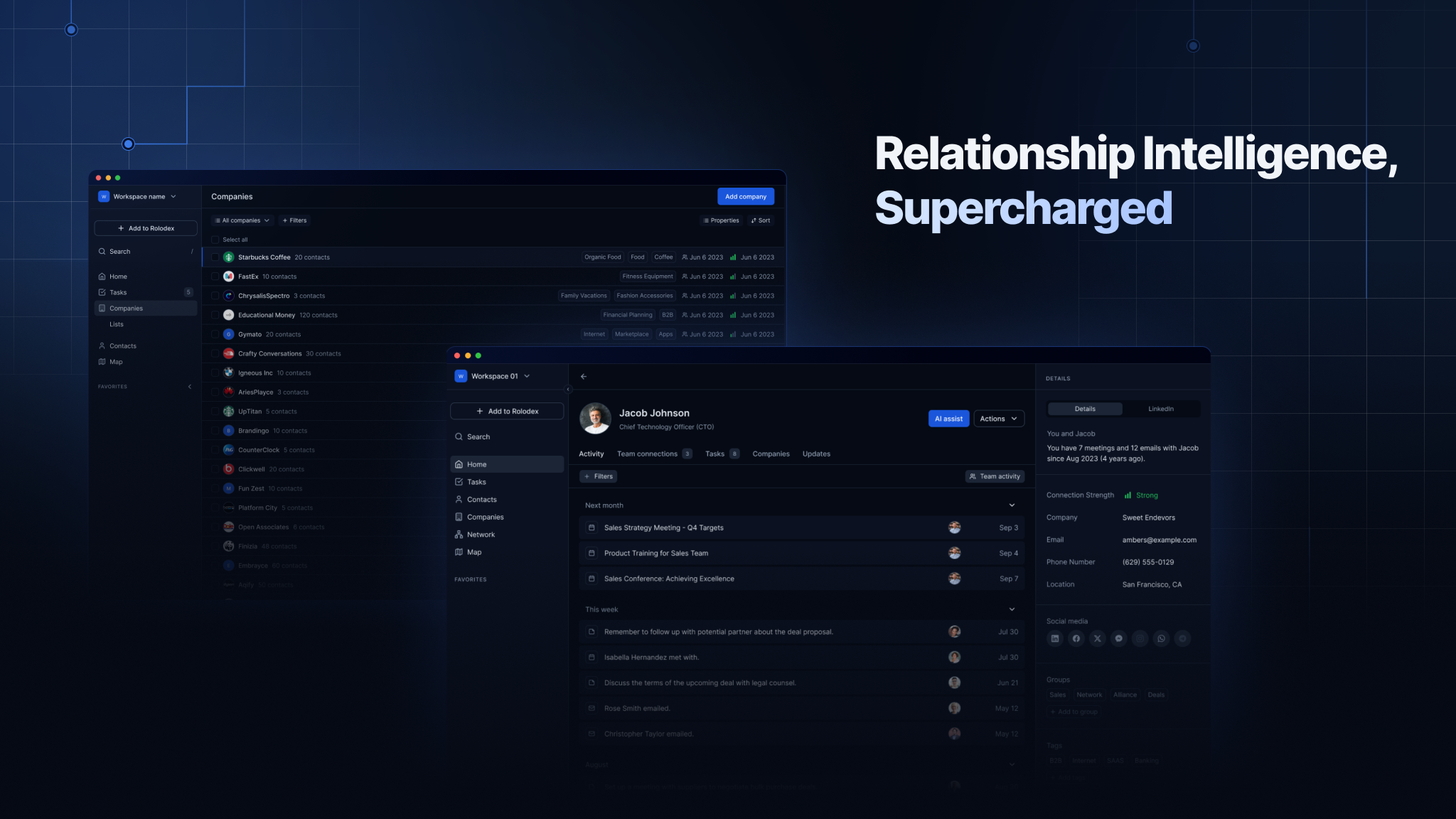Lina was staring at a list of accounts when Sarah pinged her: “Didn’t you say you’re trying to reach Alex Chen at Acme?” Lina had, in fact, tried—twice. Cold emails. No response. Then Sarah added, “I worked with Alex at Stripe. Want me to check if he’s open to an intro?” Ten minutes later, Lina had a meeting on the calendar for the following week. Nothing about Lina’s value proposition had changed; the path had. That’s the essence of warm introductions. They compress the distance between message and meeting because a trusted person bridges the gap. This guide is about turning that dynamic into a repeatable motion—how to find the right route, how to ask with grace, how to reply in a way that earns a fast “yes,” and how to track each intro from request to outcome. We’ll use Rolodex to hold the network map, the notes, and the workflow together, so none of these moments get lost in heroics or memory.
Why Warm Intros Work (Data & Psychology)
A warm introduction does three things before you even arrive. It transfers credibility from the introducer to you, it frames relevance so the recipient understands why this conversation belongs on their calendar right now, and it lowers the effort required to evaluate you. That combination is powerful because it aligns with how people actually decide. They lean on trusted peers when choosing where to spend time; they avoid the cognitive load of validating strangers; they try to be consistent with the social norms of their circles. When Sarah asks, Alex answers. And if Sarah says, “This is worth ten minutes,” it often is. You don’t need a lab to see the effect. Check your own inbox: which messages did you reply to first this week? Now imagine you could make that effect predictable across a team. That’s the point of operationalizing warm intros with Rolodex.
Finding the Right Path
The difference between an intro that lands and one that fizzles often comes down to the route you choose. In Rolodex, Lina can open Alex’s contact and immediately see which teammates know him, how they know him, and when they last interacted. She can filter the team’s network by role, seniority, industry, or geography to find a credible voice for this conversation. A former engineering manager who shipped with Alex’s team is better than a casual acquaintance from a conference. Before Lina asks, she does a quick sweep for conflicts. Is Sarah currently negotiating with Acme? Has someone on the team already reached out to Alex this month? The shared Activity Feed inside Rolodex answers those questions in seconds. A quick glance at notes shows a past collaboration at Stripe and a coffee in June; nothing sensitive, no overlapping asks. Lina leaves a short note explaining why she’s choosing Sarah as the introducer, so the rest of the team can see what’s in flight without a status meeting. This is where the platform shines: it turns tribal knowledge into team knowledge.
Treat Intros Like Pipeline
Warm intros stall when they’re treated like favors instead of assets. In Rolodex, Lina assigns herself as owner on the contact so there’s no ambiguity about who moves the ball. She sets internal reminders: if Sarah hasn’t heard back in five business days, send a gentle nudge; if Alex accepts, propose times within twenty-four hours; once the meeting is booked, drop a brief note into the Activity Feed so teammates know it’s locked.
The workflow itself is visible in a Boards View pipeline. Instead of living in a private to-do list, the intro progresses through stages: Identified Path, Ask Sent, Intro Sent, Meeting Booked, Outcome. Each column has simple service-level expectations. Respond to a new intro within two business hours. Propose times within one day. Send a thank-you to the introducer within twenty-four hours of the meeting. Most teams don’t need more than this; they need consistency and visibility, not ceremony.

Because the board is shared, sales can see that partnerships already has an ask in motion with the same executive, or recruiting can hold off on a parallel approach to avoid crowding the relationship. You reduce duplicate effort and avoid the worst sin of warm outreach: making your introducer look like they’re not in control of their own network.
After the Meeting (Close the Loop and Capture the Truth)
The meeting itself is just one chapter in the story. What happens right after often determines whether the relationship strengthens or stalls.
Lina sends Sarah a two-line update: “Thanks again for connecting me to Alex — super helpful. We met today and we’re moving forward with a pilot next month. Coffee on me next time!” If the answer had been “not now,” she’d still thank Sarah, explain the timing, and set a quarterly Keep-in-Touch reminder on Sarah because introducers are a precious resource. Gratitude compounds.

Then Lina writes the shortest note that will still be useful tomorrow. In Notes & Attachments she captures a summary (“Acme wants to reduce time-to-event by 80% ahead of Q1 launch”), the decision (“pilot in November, security review required”), the risks (“SSO timing, procurement backlog”), and the next steps with dates (“send updated pricing by Friday, intro to Security lead next week”). She pins this “current truth” note so anyone opening the contact sees the latest in seconds. If there was a deck, a mutual action plan, or a recording transcript, she drops them in as attachments so nobody has to dig through email threads in December.
That moment—the neat, legible capture of reality—turns one person’s conversation into team context.
Scaling Intros Across the Team (Rituals, Not Bureaucracy)
You don’t need a heavy process to scale warm intros; you need light rituals that prevent drift. Many teams run a 20-minute weekly review. They look at the top routes in flight and ask a simple question: are we pursuing the warmest path for this account or person? They scan the board for stalled stages and adjust the SLAs if they see a pattern. They paste the best forwardable blurbs and reply lines into a short “Intros Cheat Sheet,” linking it from Rolodex so it lives next to the work. No formal templates; just language your team can actually find and reuse.
Over time they develop playbooks by segment. The blurb that resonates with a VP of Sales might read differently for an Enterprise CIO. Proof points shift, ask size shifts, even tone shifts. Those nuances sit in the cheat sheet and in pinned Notes on key contacts, so the guidance is always within reach when it matters.
And because relationships don’t stay still, the team uses Title Alerts to re-engage when someone changes roles, and Map View when planning roadshows or conferences so they can stack meetings and turn the soft gravity of an event into two days of high-quality conversations.

Questions You’ll Ask (and Pitfalls You Can Avoid)
People often ask whether it’s ever okay to skip double opt-in. The honest answer is “rarely.” If the introducer insists and both parties are used to direct connections, fine—but default to the private check first. It protects relationships. Another common question is about follow-ups: how many is too many? One gentle nudge to your introducer after a few business days is usually enough. If it’s quiet after that, try a different route or let it rest. No one remembers the extra nudge that never came; they do remember being chased.
As you scale, track a few simple numbers that tell the real story: how many intros were requested, how many were sent, how many turned into meetings, how many of those became qualified opportunities, and, ultimately, what closed. Watch time-to-reply and time-to-meeting, because speed signals respect in warm networks. Compare win rates against cold outbound to remind yourselves why this motion deserves time on the calendar. The pitfalls are predictable. Vague asks that force your introducer to write your pitch. Reply emails that read like a white paper. Letting intros sit overnight. Pushing after a “not now.” Failing to close the loop with thanks. You can dodge all of them with a little care and a place to keep the pieces together.
How Rolodex Makes Warm Intros Frictionless
Rolodex is where the route, the ask, and the record live side-by-side. You can see who your team knows and pick the credible path; keep your best double opt-in and reply language in a pinned Note or a linked team doc so no one ever starts from scratch; track each intro through a visible Boards View so owners, SLAs, and outcomes are obvious; and capture the after-action reality with Notes & Attachments so the next person is instantly up to speed. With Title Alerts, you’ll catch the perfect moments to re-engage. With Map View, you’ll turn travel into face-to-face momentum. And with simple API hooks, you can even push call transcripts straight onto the contact as notes, so the feed tells the whole story without copy-paste.

Most importantly, Rolodex makes the social fabric of your business legible. Sarah’s credibility, Lina’s craft, and Alex’s time become part of a system that respects each person’s role while improving the odds for everyone.
See Your Best Warm Paths → Auto-Track Intros to Meetings
Don’t leave intros to memory and favors. Make them your most reliable source of meetings. Find the right route in seconds. Ask with language that earns a quick opt-in. Reply within minutes with a human-sized next step. Track each intro through to outcome. Capture the truth so the team can act on it tomorrow. Then do it again—with less friction each time.
Turn relationships into reliable pipeline. Run warm introductions with Rolodex.
